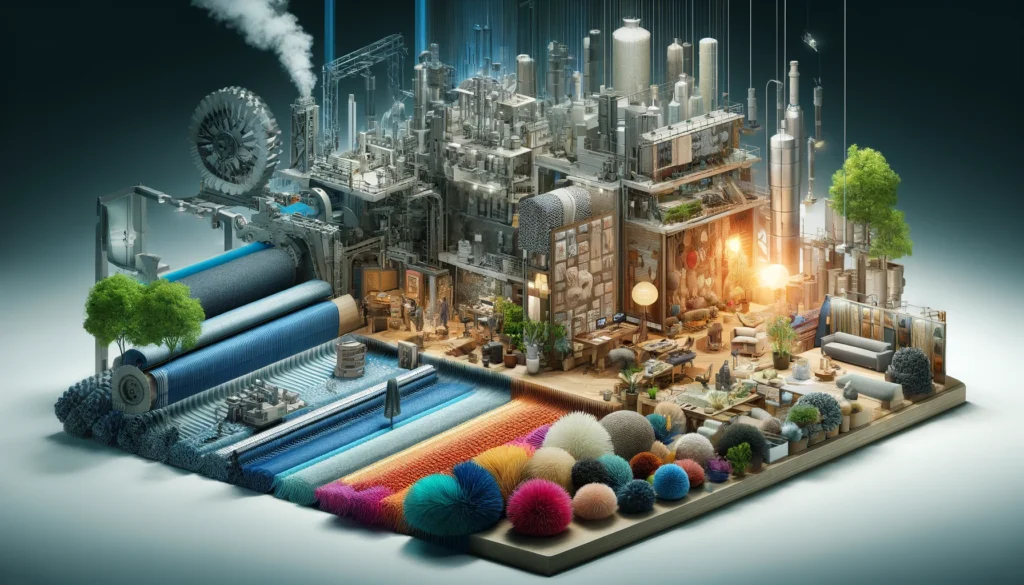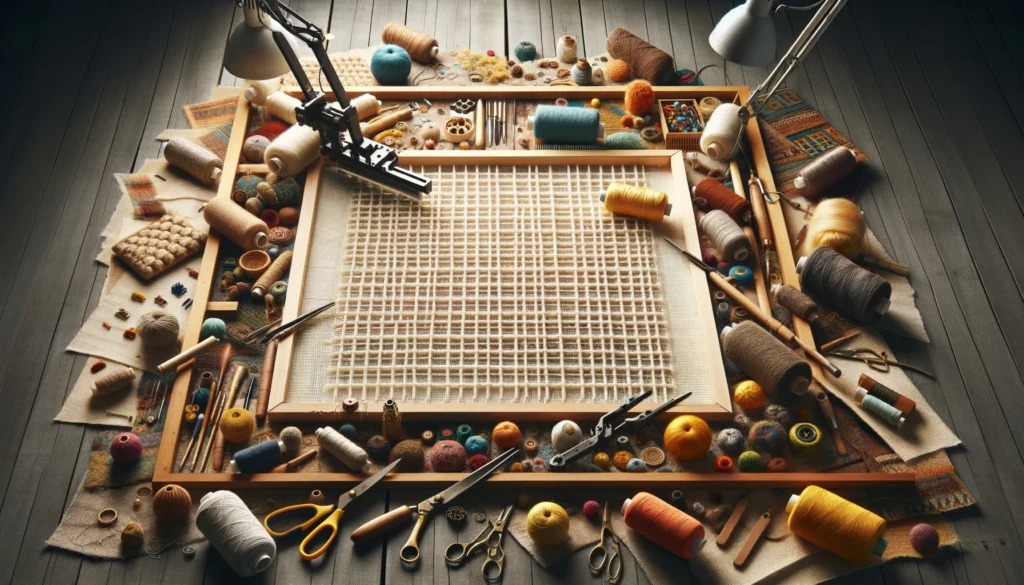At the heart of many lush, textured carpets and innovative textile designs lies tufting cloth, a specialized fabric designed for needle penetration without fraying or unraveling. This fabric’s unique construction makes it an ideal canvas for tufting, a technique that inserts yarn loops into a base fabric to create a pile or textured surface. From the plush carpets that grace our homes to the creative textile art that adorns galleries, tufting cloth plays a pivotal role in bringing tactile and visual warmth to our spaces
The Fabric of Creativity: Understanding Tufting Cloth
Tufting cloth is not a one-size-fits-all material. Its variations, including different weights, weaves, and backing materials, cater to the diverse needs of tufting projects, from delicate decorative pieces to durable floor coverings. The properties of tufting cloth, such as its weave density and material composition, directly influence the outcome of a tufted project, affecting everything from the fabric’s durability to how well it holds the yarn in place.
Behind the Scenes: Production of Tufting Cloth
The journey of tufting cloth from raw materials to finished product is a fascinating process. It begins with the selection of fibers, which can range from natural options like cotton and wool to synthetic ones like polyester and nylon. These fibers are then woven or bonded to create a stable base for tufting. The production process not only determines the cloth’s quality but also its suitability for different tufting techniques and end uses.
Carpet Tufting Techniques Demystified

Carpet tufting can be divided into manual and machine tufting, each offering different levels of complexity and design flexibility. Manual tufting, often done with a hand-held tufting gun, allows for intricate designs and personal touches, making it a favorite among artists and hobbyists. Machine tufting, on the other hand, is favored for commercial production due to its efficiency and uniformity.
The Art and Craft of Carpet Making with Tufting Cloth
Designing a tufted piece involves a blend of artistic vision and technical know-how. Color, texture, and pattern play significant roles in the design process, influencing both the aesthetic appeal and functional attributes of the finished product. This section will delve into how tufting cloth can be transformed into stunning carpets and rugs, highlighting the creative potential of this versatile fabric.
Innovations in Tufting Cloth Production and Use
The world of tufting cloth is constantly evolving, with technological advancements and a growing emphasis on sustainability shaping its future. Innovations in fiber technology, tufting equipment, and ecological manufacturing processes are expanding the possibilities of tufting cloth, making it more accessible, versatile, and environmentally friendly than ever before.
Practical Guide to Starting with Tufting Cloth
For those new to tufting, selecting the appropriate tufting cloth and understanding the tools and equipment required can be daunting. This practical guide aims to demystify the process, offering advice on choosing the right materials and getting started with tufting projects.
Mastering the Techniques: Tips for Effective Carpet Tufting
Achieving mastery in carpet tufting requires practice, patience, and a bit of creativity. This section provides a step-by-step guide to the tufting process, from planning your design to finishing your piece, along with tips for overcoming common challenges faced by tufters.
Showcasing Creativity: Projects and Ideas Using Tufting Cloth
Tufting cloth offers endless possibilities for creative expression. Whether you’re interested in creating bespoke home decor, personalized gifts, or even tufted wearable art, this section will inspire you with projects and ideas that showcase the versatility of tufting cloth.

The Future of Tufting Cloth in Textile Art
As we look to the future, tufting cloth continues to play a significant role in the world of textile art and design. Emerging trends, such as the incorporation of digital design and eco-friendly materials, are set to further expand the creative and functional potential of tufted textiles.
This comprehensive guide aims to illuminate the rich history, diverse applications, and innovative future of tufting cloth, offering insights and inspiration for anyone captivated by the art of tufting.
Tufting cloth is a specialized fabric designed for use in the tufting process, where yarn is inserted into the cloth to create textures such as rugs, carpets, and other textile art. It’s characterized by its durability and ability to hold yarns in place without fraying.
Manual tufting, often performed with a hand-held tufting gun, allows for greater artistic freedom and customization, making it ideal for unique or intricate designs. Machine tufting, however, is more efficient for producing large volumes of tufted materials with consistent quality and is commonly used in commercial carpet manufacturing.
Absolutely! Tufting cloth is versatile and can be used to create a wide range of home decor items, including custom rugs, wall hangings, pillows, and more. Its ability to be shaped into various textures and patterns makes it a popular choice for DIY and professional interior design projects.
A variety of yarns can be used with tufting cloth, including wool, cotton, acrylic, and polyester. The choice of yarn depends on the desired texture, durability, and color of the finished product. Natural fibers like wool and cotton offer warmth and softness, while synthetic fibers provide durability and vibrant colors.
Selecting the right tufting cloth depends on the specifics of your project, such as the intended use, desired texture, and the type of yarn you plan to use. For heavier, more durable items like rugs, a thicker and more robust tufting cloth is recommended. For decorative pieces, a lighter cloth may suffice.
